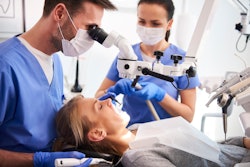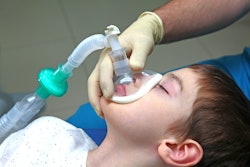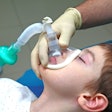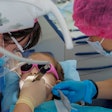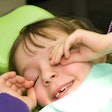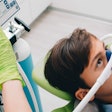A 5-year-old developed ptosis or eye drooping after having a pulpotomy with sedation, which is believed to be the first case to be linked to dental procedures. The case report was published on July 30 in the Journal of the American Dental Association.
Imaging revealed the healthy girl had pansinusitis without intraorbital complications. Bacterial spread after the dental procedure likely worsened inflammation, and the use of nitrous oxide sedation and possible compression of the oculomotor nerve likely led to her condition. After five days in the hospital and treatment with IV antibiotics, her ptosis completely resolved, the authors wrote.
“To our knowledge, this is the first reported case of ptosis due to sinusitis occurring after dental treatment under N2O (nitrous oxide) sedation,” wrote the authors, led by Dr. Reema Mahmoud of Tel Aviv Sourasky Medical Center in Israel.
A 5-year-old girl who underwent a pulpotomy
In October 2024, the healthy child had a pulpotomy of the maxillary left primary second molar as part of a comprehensive treatment plan. During the procedure, she had no signs of illness. The procedure, which was performed under nitrous oxide with local anesthesia, was successful, and there were no complications, according to the report.
The day after the procedure, the girl experienced severe headaches, congestion, and left cheek swelling. The next day, she went to a hospital emergency department. During an exam, it was revealed that her left upper eyelid had marked ptosis, the authors wrote.
An intraoral exam revealed no signs of infection or swelling. However, an eye exam revealed ptosis with a marginal reflex distance 1 of 0.5 mm. Then, the child underwent an IV contrast-enhanced computed tomographic scan of the head and paranasal sinuses, which revealed “cervical lymphadenopathy (more prominent on the left side) and heterogeneous, partially hyperdense opacification of the maxillary left, ethmoid, frontal, and sphenoid sinuses, indicating sinusitis,” according to the report.
Based on imaging and clinical and laboratory findings, as well as the lack of inflammation, the girl was diagnosed with partial oculomotor palsy secondary to sinusitis. They noted that the sinusitis was likely present but asymptomatic before the pulpotomy.
After several days of IV antibiotics and the resolution of her ptosis, she was discharged from the hospital.
Factors to note
Though nitrous oxide is used regularly and considered safe in pediatric dental patients, several contraindications, including its use in patients with sinusitis, have been noted. Nitrous oxide rapidly diffuses into gas-filled body cavities like the paranasal sinuses. Typically, this is tolerated in healthy patients. But in the presence of patients with sinusitis, which causes inflammation and obstructs the sinus from draining, the increase in pressure from nitrous oxide may exacerbate mucosal edema and stasis, they wrote.
In this case, the use of nitrous oxide may be considered a potential secondary factor that may have worsened preexisting sinusitis but was not the primary cause of the child’s drooping eye.
“When combined with bacterial spread from the dental procedure, these factors may have contributed to the development of partial oculomotor nerve involvement in a susceptible anatomic setting,” Mahmoud and colleagues wrote.
In many cases, acute ptosis due to sinusitis would be considered a medical emergency that often presents as painful paralysis or weakness of the eye and reduced vision. Therefore, quick clinical and imaging assessments may prevent patients from experiencing more critical eye problems and complications.
“Our case report contributes to the limited literature on partial oculomotor nerve palsy and isolated ptosis caused by sinusitis and, to our knowledge, we are the first to describe it after dental treatment under N2O sedation,” Mahmoud and co-authors wrote.






